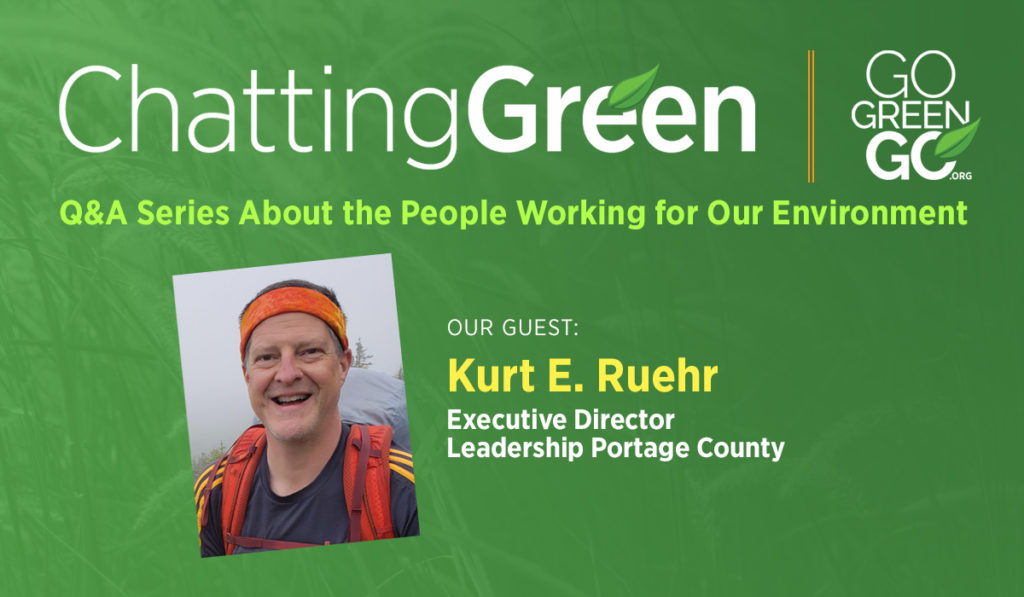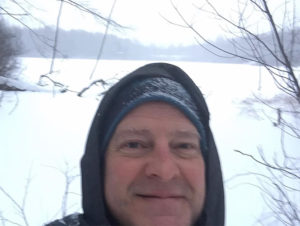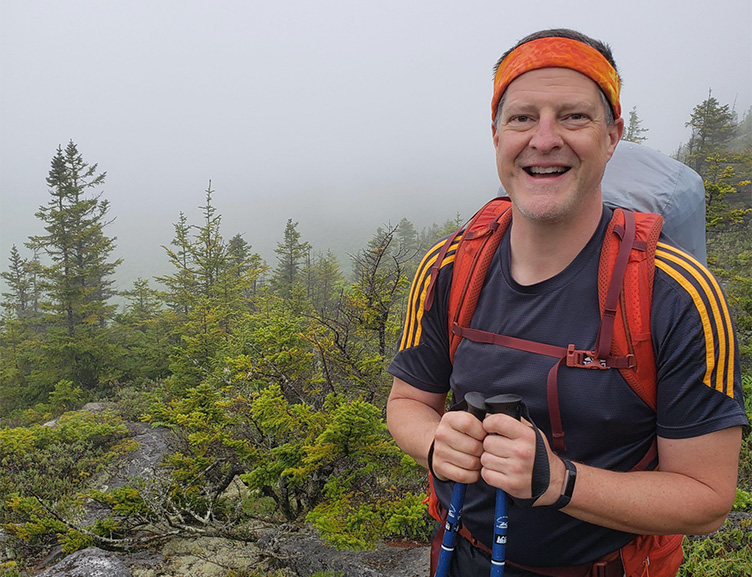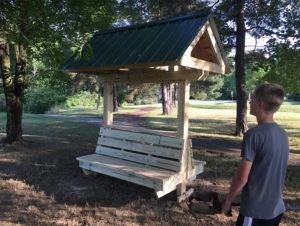Chatting Green with Kurt Ruehr of Leadership Portage County
- Chatting Green
-
Feb 26
- Share post

In this installment of Chatting Green, we are pleased to talk with Kurt Ruehr, Executive Director of Leadership Portage County. Preserving park lands in Portage County has played an important personal and professional roll for Kurt for more than 20 years.
…
You have worked extensively with preserving park land in Portage County. Tell us a little about that work, and what environmental projects you are currently working on.
 I first became involved with parks when I was in college. I lived in Kent at the time and attended a Rails to Trails meeting in the Roy Smith Shelter in Fred Fuller Park. The idea was to turn the rail bed between Kent and Ravenna into a bike trail and eventually build it out to connect to the bike trail that was in Munroe Falls. That was some time in the early 1990’s.
I first became involved with parks when I was in college. I lived in Kent at the time and attended a Rails to Trails meeting in the Roy Smith Shelter in Fred Fuller Park. The idea was to turn the rail bed between Kent and Ravenna into a bike trail and eventually build it out to connect to the bike trail that was in Munroe Falls. That was some time in the early 1990’s.
One lesson that I learned was that meaningful change takes time and over 20 years later I had the privilege of being at the ribbon cutting ceremony on that trail. I was there because in 2008 I was part of a City of Aurora Parks and Recreation Master plan review. For one of our meetings, Christine Craycroft Executive Director of The Portage Park District gave a presentation about the county parks which was very interesting and exciting to me. Then the impact of the financial crisis hit Portage County government. The commissioners began to slash the budget and ultimately even suggested that some park land could be sold off to make the budget balance. This was not acceptable to me.
I saw an ad in the paper asking for people who were interested in being a part of the Portage Park District Foundation. I should note that I did not know what a foundation did, or how to form one, or how to make any of this happen. I want to be clear that when I say I, in regards to work with the foundation, I mean we, lots of very smart and talented people came together to bring this organization to life.
I was interviewed and selected to be on the board where I became a charter member and the first vice president. In the early years the focus was simply to raise funds to cover very basic operating expenses. We were successful. Slowly momentum grew and park friends increased. Ultimately some of those friends stepped in and rallied to pass the first Park District Levy! That was the game changing moment.
For so many years the amazing Chris Craycroft had been building relationships and developing a vision for what the parks could become, now there was funding. That levy passage triggered the donation of Shaw Woods, an amazing piece of land adjacent to Camp James A. Garfield. Since that ribbon cutting, many other properties have been acquired or opened.
I am not currently a Foundation board member, but I am a steadfast supporter. I annually MC the Environmental Awards and do the timing for the Headwaters Race. I was fortunate enough to do a virtual awards show in 2020 where we celebrated the acquisition of several new properties. I look forward to following Craycroft’s vision for the parks in the coming years, I know there are many exciting things in the works!
One lesson that I learned was that meaningful change takes time
What do you see as Ohio’s biggest environmental challenge right now?
 I think our biggest challenge is recognizing the resources that we have and protecting them. We have woods and waters that can be saved and even rehabilitated, but we need to see the value in doing so. We need to recognize that parks are for all of us. People need to go outside and paddle the rivers and sit quietly in the forest to understand their value. If we can recognize that value, we will rise up together to make our environment better.
I think our biggest challenge is recognizing the resources that we have and protecting them. We have woods and waters that can be saved and even rehabilitated, but we need to see the value in doing so. We need to recognize that parks are for all of us. People need to go outside and paddle the rivers and sit quietly in the forest to understand their value. If we can recognize that value, we will rise up together to make our environment better.
ALSO – Energy! My Master’s Thesis was about energy stocks and where things were headed. Through that experience I realized that everything that our modern society does causes cash to flow to energy companies. Even writing this on my laptop uses energy and thus cash flows to the electricity generator. It also became apparent in the years since that the vast amounts of money in energy drives corruption. In Ohio we currently have a situation where the former speaker of the House has been charged in a multi-million dollar bribery scandal. The energy company doing the bribery still has not been named and Householder was re-elected with a large majority of votes. That same unnamed energy company runs a monopoly, has private jets, names stadiums, pays their executives huge multi-million dollar compensation packages, is allowed to take over and bulldoze lands against local citizen’s interests. Who else do they have on their payroll that is preventing them from being publicly named? This issue is still unfolding, please pay attention. That dark money was in full force during the November 2020 election. Government continues to pour money into fossil fuel industries.
Those industries pollute absolutely. We accept it, but should not. We could funnel that cash and subsidies to smaller, renewable power generators and significantly improve our environment. We could use that money to improve infrastructure that could reduce traffic and increase energy efficiency. Instead we turn a blind eye to the excesses and lies.
People need to go outside and paddle the rivers and sit quietly in the forest to understand their value. If we can recognize that value, we will rise up together to make our environment better.

What environmental issue means the most to you personally and why?
Parks and land preserves. I realize that the mark I want to leave behind is a park. In a very personal way I think about my yet to be born grandchildren, and their grandchildren. I think that someday they will be able to go to a park for an afternoon stroll because of something that I did today. That thought drives me onward.
My focus is largely on Portage County. I have a county map that is mounted on a piece of foam board that I use in my role as Executive Director of Leadership Portage County. When I look at that map I understand that it is not getting any bigger. If we care about parks and public spaces, then we need to understand what our development decisions mean for the area inside that rectangle. When a piece of land becomes a factory or housing development, it is forever altered. It is highly unlikely to become a forest again. That interference with nature needs to be more carefully observed.
What was your inspiration to get involved with environmental issues?
I have always loved being out in the woods. When I was a kid my mom would have to pull splinters out of my feet because I spent my time exploring the woods like a wild thing. Even now, I get a new pair of shoes and try as I might, they end up muddy and stained surprisingly quickly because I saw something interesting and had to go check it out.
While in college I realized that since I loved being outside so much, it might be possible to be involved with the environment as a career. I graduated with a degree in Conservation of Natural Resources. I never really was able to be employed with that degree, but in combination with my MBA it gives me perspective to see many sides of an issue. I think that this has been helpful to me over the years in supporting environmental causes.
How can concerned individuals make the most positive impact with regard to the environment?
 Be aware! Start local. Find out what your local community’s plans are. Is there a housing development going in? Is there a plan to allow waste dumping or injection? Tell you local elected officials how you feel. Drop a note, make a call.
Be aware! Start local. Find out what your local community’s plans are. Is there a housing development going in? Is there a plan to allow waste dumping or injection? Tell you local elected officials how you feel. Drop a note, make a call.
Don’t be afraid to raise your hand even if you don’t know how to take the next step. The day I joined the Portage Park District Foundation, I knew almost nothing. One thing that I did know was that the idea of selling park land for development made me feel sick. So, I raised my hand and with the help of many people I learned a lot and made a difference. It changed my life in many positive ways as an added bonus.
